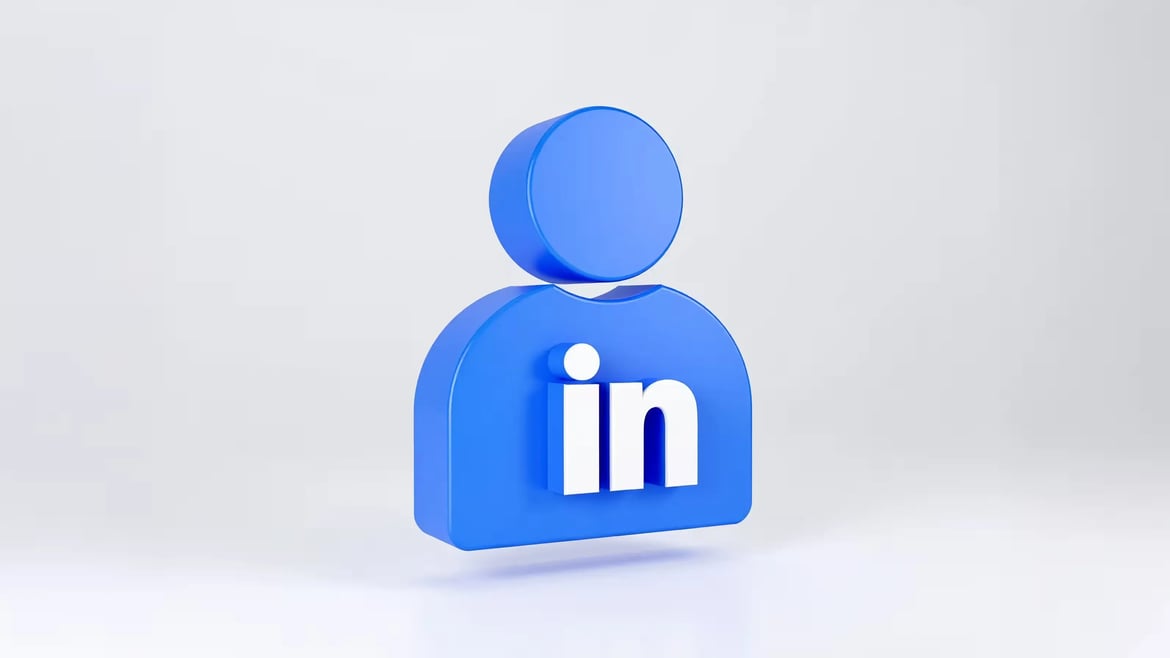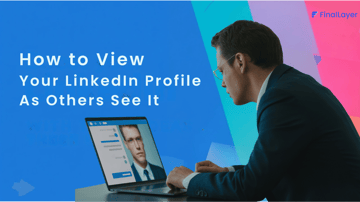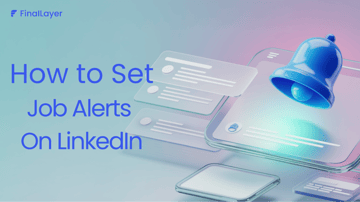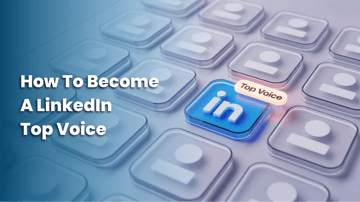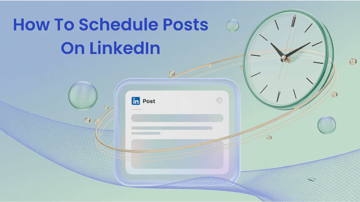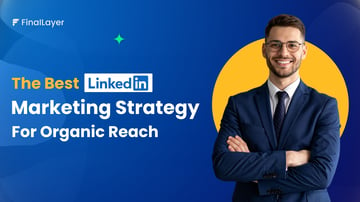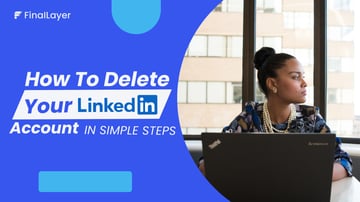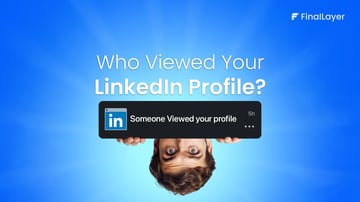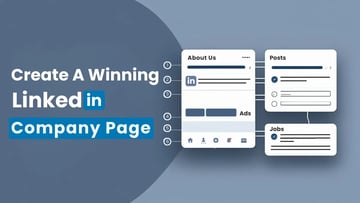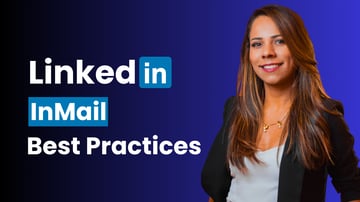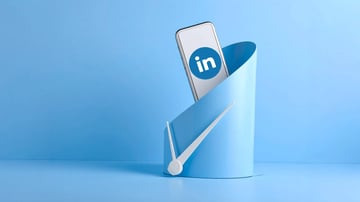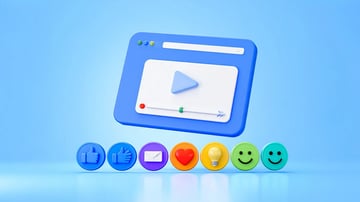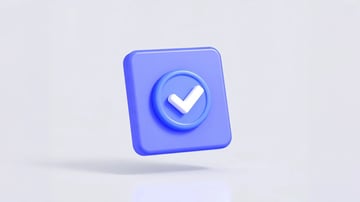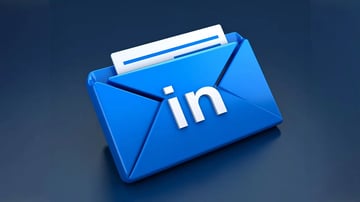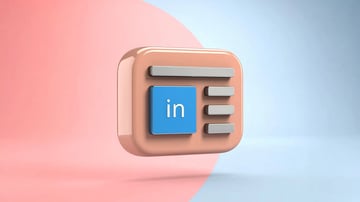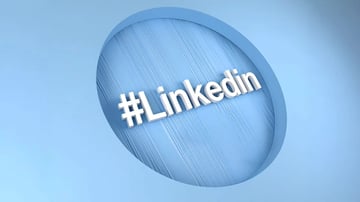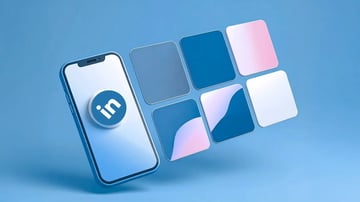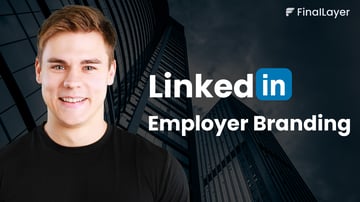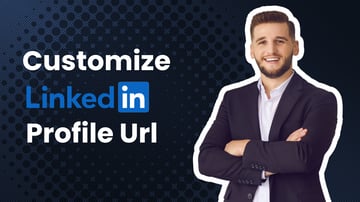If you're like me and most professionals, you know your LinkedIn profile needs work but aren't sure where to start. We often put off profile optimization because we're busy, or maybe it feels a bit self-promotional. But an unoptimized LinkedIn profile means you're invisible to opportunities that could transform your career.
I've discovered that a well-optimized LinkedIn profile is your most powerful professional asset. The platform constantly adds new features that can help you stand out, but only if you know how to use them effectively.
If you haven't optimized your profile recently, you're likely missing out on job opportunities, business connections, and industry recognition. But don't worry - I'm going to walk you through every component of your LinkedIn profile. From your profile photo to advanced features like Creator Mode, we'll cover everything you need to create a profile that works as hard as you do. So, Let's start:
Profile photo
Your profile picture is the first thing people see, and we all know how much first impressions matter. I recommend using a recent photo where your face takes up about 60% of the frame. Dress like you would for an important meeting and remember to smile genuinely - it makes you more approachable.
Background banner
Right below your photo is your background image. This is your chance to show a bit more personality or highlight what you're passionate about. It could be your company logo, an image related to your industry, or something that represents your professional values.
Headline
Your headline deserves special attention too. Instead of just listing your job title, why not tell people what you actually do and why it matters? I've seen colleagues in sales write headlines like "Helping small businesses save time with smart automation solutions" instead of just "Sales manager." It makes such a difference in capturing attention. If you are about to craft your LinkedIn headline then you can check out our complete guide on headlines.
Summary
Your summary section is where you really get to shine. Don't just list your skills - tell your story. Why do you do what you do? What problems do you solve? What gets you excited about your work? I spent several hours crafting mine, trying different versions and getting feedback from trusted colleagues. It was worth every minute.
While writing, try to avoid those overused buzzwords we all fall into - you know, calling yourself "passionate," "strategic," or "innovative" without actually showing how. Instead, share specific examples or achievements that demonstrate these qualities.
Learn more about the profile summary here.
Profile verification
LinkedIn's profile verification feature adds an extra layer of trust to your profile. I was surprised how easy it was to verify my identity - the process took just a few minutes using my phone. That little checkmark might seem small, but it signals to potential connections that you're a real professional, not a bot or fake account. In today's digital world where trust is everything, this simple step can make a real difference.
Learn more about profile verification here.
Uploading resume
Along the same lines, uploading your resume to LinkedIn serves multiple purposes. It makes you more discoverable to recruiters who search the resume database, and it provides a downloadable version of your experience for interested parties.
I update mine quarterly to ensure it reflects my latest achievements. Just remember to remove any sensitive information like your home address before uploading.
Experience section
Don't forget to add your promotions and career milestones to your experience section. Each time you get promoted or take on new responsibilities, update your profile to reflect this growth.
I learned to treat each position, even within the same company, as a separate entry. This shows your career progression and the expanding scope of your responsibilities over time.
When adding these updates, focus on the impact you made in each role. Instead of just listing duties, share specific achievements.
Learn more about adding a promotion here.
Asking for Recommendations
Let me expand on recommendations because they're incredibly powerful when used right. I've developed a system for requesting recommendations that works well. First, I identify 5-6 people who can speak to different aspects of my work - a former manager, a direct report, a client, a peer from a cross-functional team. Then I send personalized requests explaining what I'd love them to highlight.
The key is being specific. Instead of just asking for a recommendation, I might say: "Would you mind writing about that product launch we worked on together? I'd love it if you could mention how we overcame the supply chain challenges and still delivered on time." This makes it easier for them to write something meaningful and ensures the recommendations showcase diverse aspects of your capabilities.
Learn more about asking for recommendations here.
Writing Recommendations
I also make it a point to write recommendations proactively. When a colleague does exceptional work or when I finish a successful project with someone, I offer to write them a recommendation while the experience is fresh.
This often leads to reciprocal recommendations, but more importantly, it strengthens professional relationships.
Learn more about writing recommendations here.
Network building
Many people think that a growing network means collecting connections like baseball cards, but this is not how it works. What works is that professional relationships should be meaningful.
I've found that syncing my email contacts with LinkedIn helps identify people I should connect with. After meetings or conferences, I always send personalized connection requests - it's a great way to stay in touch and keep conversations going.
Skills section
Your skills section might seem straightforward, but it's actually quite strategic. Focus on listing skills that truly represent your expertise rather than trying to fill all 50 slots. I review mine quarterly, removing outdated skills and adding new ones as my role evolves.
Learn more about adding skills/promotions here.
Endorsements
Endorsements work hand-in-hand with recommendations to build your credibility. I make it a habit to endorse colleagues whose work I genuinely admire - often, they return the favor.
But you have to manage your endorsements strategically. You can reorder them to highlight your most relevant skills at the top, and hide endorsements that don't align with your current career focus.
Continuous learning
Don't forget to showcase your continuous learning. Whenever I complete a LinkedIn Learning course, I add the certificate to my profile. It shows I'm committed to staying current in my field. The same goes for external certifications, awards, and accomplishments - if you earned it, display it.
Content sharing
A polished profile is just the start - you need to stay active to really benefit from LinkedIn. I try to share relevant content from my feed at least twice a week, always adding my own commentary to explain why I find it valuable.
Share video content with FinalLayer
Video content is becoming increasingly important on LinkedIn, but I know many professionals struggle with the time it takes to find and edit relevant video clips. If you're like me and want to incorporate more video posts but find the process overwhelming, there's actually a clever solution.
With FinalLayer, you can create a LinkedIn video post in 5 minutes. Instead of spending hours searching through footage, I just write a prompt describing what I want, and the system automatically finds relevant video clips.
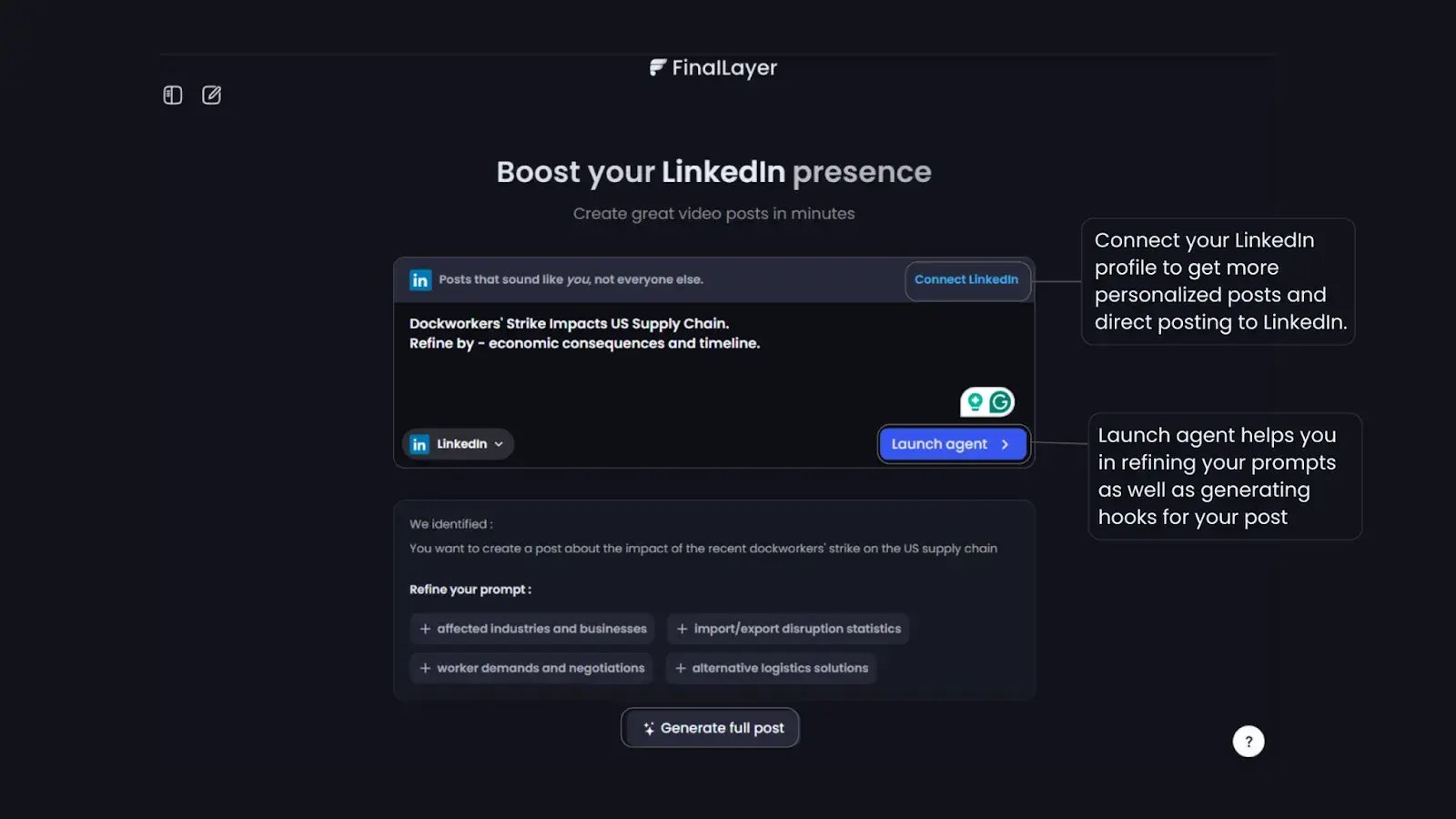
The system automatically finds relevant video clips and generates a full LinkedIn post. If I don't like the suggested videos, I can browse other options.
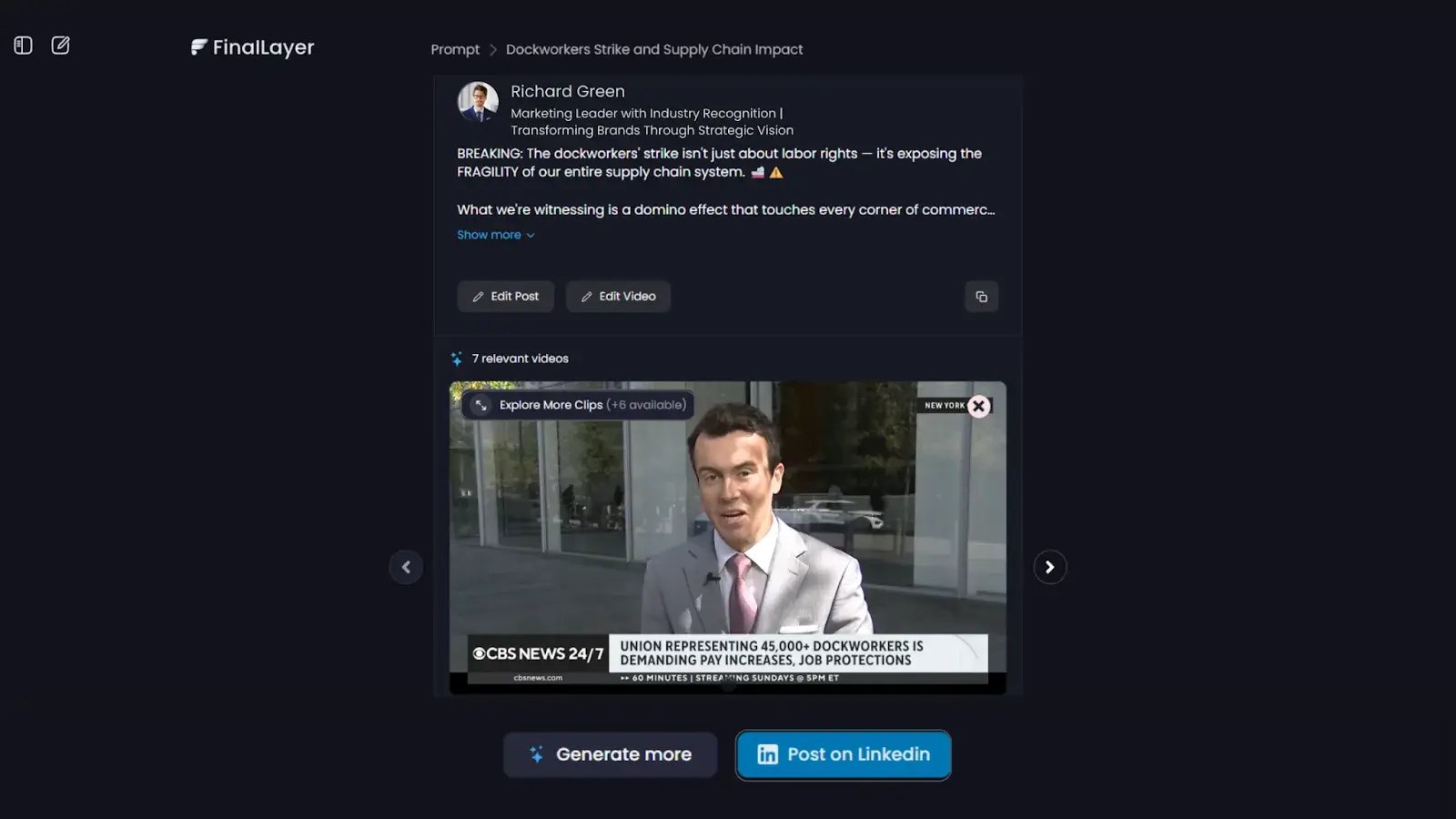
or even upload my own video link.
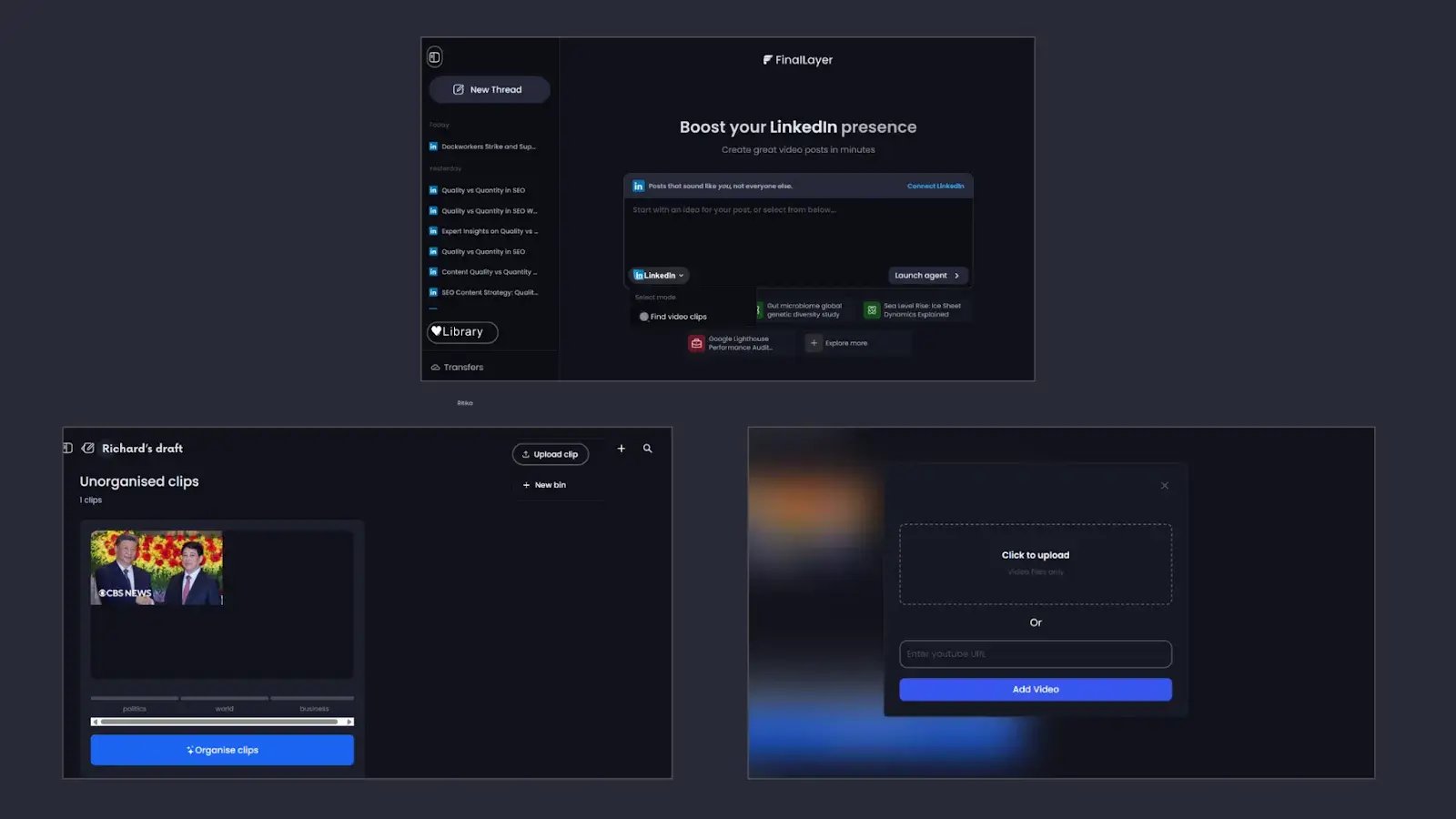
The best part? I can search for specific moments within a video using prompts without scrubbing through entire videos to find that perfect 30-second clip. It's made video posting so much more manageable that I now share video content regularly.
Engaging with others
Following industry influencers keeps my feed interesting and gives me great content to share with my network. When I comment on posts, I make sure to add something meaningful to the conversation rather than just saying "Great post!" This has led to some fantastic discussions and new connections.
Learn about commenting with CFBR here.
Creator mode
LinkedIn's Creator mode has been a game-changer for building thought leadership. It gives you access to additional tools and analytics that help you understand what content resonates with your audience. If you're regularly sharing insights and creating content, I highly recommend turning it on.
Services section
For consultants and freelancers, the Services section is invaluable. You can showcase what you offer, share pricing if appropriate, and make it easy for potential clients to reach out. I've seen colleagues generate significant business just from having a well-crafted Services page.
Collaborative articles
The new collaborative articles feature is another opportunity to demonstrate expertise. When invited to contribute, you can share your insights alongside other professionals, potentially earning a "Top Voice" badge in your field.
Sales navigator
If you're serious about using LinkedIn for business development, Sales Navigator might be worth the investment. Users typically see 4.3x more connections, 42% larger deals, and 17% higher win rates.
It's not for everyone, but if LinkedIn is a key part of your business strategy, the advanced search and messaging features can pay for themselves quickly.
Your ongoing journey
Optimizing your LinkedIn profile is an ongoing process. I update my profile whenever I achieve something significant, learn a new skill, or shift my professional focus. The key is to be authentic while being strategic about how you present yourself. Start with the basics. Maybe optimize your headline this week, work on your summary next week. Every optimization, no matter how small, increases your visibility and effectiveness on the platform.Your future self will thank you for taking the time to optimize your LinkedIn profile today.
